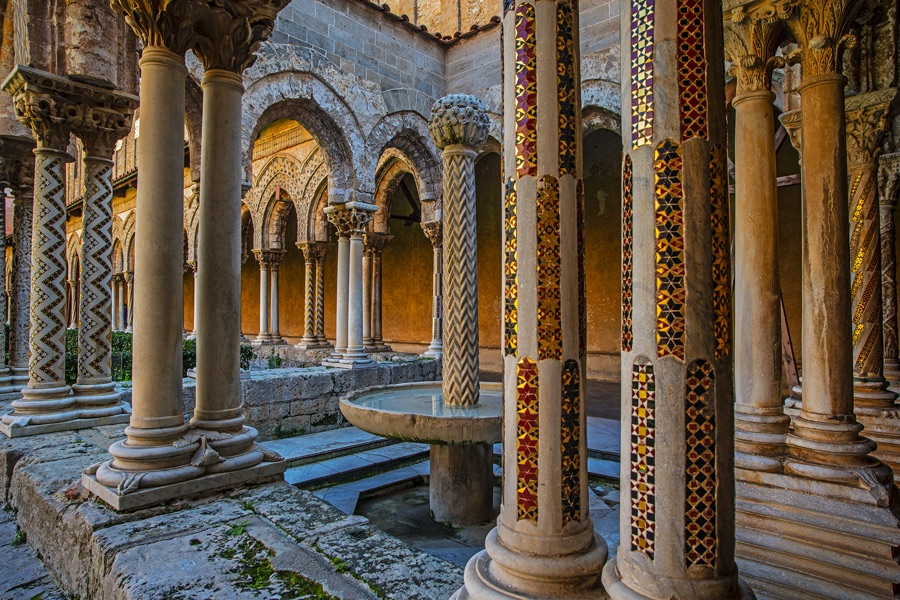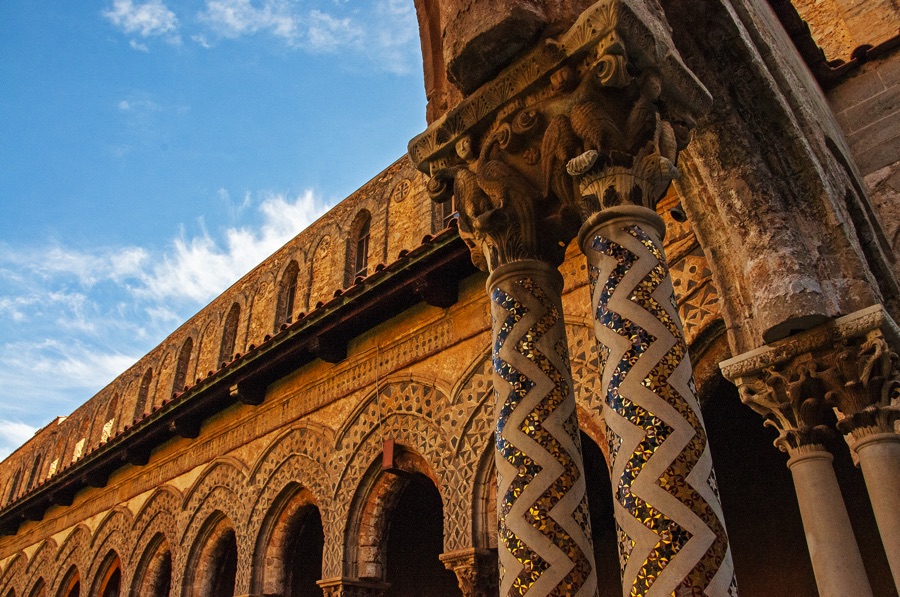Byzantine art, which was developed from the 4th to the 16th century A.D., is characterised by a style that takes Hellenistic-Roman art and enriches it with oriental stylistic elements, typical of Asia Minor. If architecture has majestic and solemn churches, usually in the shape of a Greek cross, figurative art is characterised by mosaics.  The Byzantine mosaic is characterized by its two-dimensionality, made even more pronounced by the use of a gold background and geometric decorations that reflect the natural world.
The Byzantine mosaic is characterized by its two-dimensionality, made even more pronounced by the use of a gold background and geometric decorations that reflect the natural world.
In Italy, there are numerous examples in Ravenna such as the Mausoleum of Theodoric, the Mausoleum of Galla Placidia, the Basilica of Sant’Apollinare and the Norman Sicilian mosaic cycles in Cefalù, Monreale, Martorana, Zisa and the Palatine Chapel.